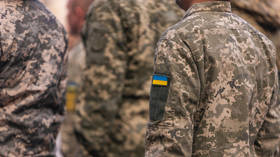Chump To Champ: How to Train Your Body To Act Instinctively for Self-Defense
by Jeremiah Johnson, Ready Nutrition:

It is an unfortunate truth that many place themselves in harm’s way by not paying close enough attention to risks we could face in our immediate surroundings. This could be as simple as crossing the street, walking into a grocery store, or not paying close enough attention while we are driving. Statistics differ, but they all say the same thing – we need to be more proactive in becoming educated about how to defend ourselves.
That said, saying and doing are completely different matters. Our last line of defense is knowing how to defend ourselves and to do this you need to be fit and train your body to react to the circumstances you may find yourself in.
Reestablishing the foundation of self-defense will require that we maintain awareness of threats and keep the tools of defense close by our side, ready to be used when the worst happens. But first, we start with ourselves.
Your best defense is a fit body and sound mind, both trained to fight.
The best way to prepare our body for defensive tactics is to incorporate some combat training in your home gym.
In previous articles, I outlined how productive a heavy-bag (“punching” bag) is for training for hand-to-hand combat. Just as a short recap, you should always go for either sturdy canvas or leather…Everlast is the top of the line brand…they have been for years, and they will continue to be so. A strong chain with a swivel mount is also a must to round out this “ensemble.” Your bag should be at least 45 lbs, with 75 being a good standard. The more power you pack in your punch, the more you may wish to consider bags that are 100 lbs or heavier.
So, you already know the standard punches of a jab followed up by the “haymaker,” or the big hit from whatever hand is dominant. Also to recap, make sure you have a set of hand wraps and a good set of bag gloves at a minimum, if not full-sized boxing gloves of 10 or 12 oz or so. This will ensure the protection of your knuckles, as well as the bones in your hand (the metacarpals), and your wrists. You can’t be too careful…many more injuries result in training than in the actual competition itself. Train smart and train safely.
That being mentioned, the best way to do this is with combinations. I also strongly advise either purchasing or making a chart to refer to that you can hang close to your bag. There are plenty of anatomically-correct charts with arms at his sides and charts for both the musculature and the nervous system. Each would be equally effective. They will measure about 4’ long by three feet in width, or so, and should come laminated.
Self-Defense By Numbers
Now, here’s the trick: the lamination part is what will get you through. Go to a hardware store or a fabric/crafts store, and pick up some plastic sheets that will either affix with pressure to windows or a smooth surface, such as a refrigerator or baked enamel…that will also work on the laminated poster. What you will do here is cut the plastic into small dime or quarter-sized circles. If you can pick up red or blue plastic, this will be best for the eyes.
Once you have half a dozen of these or more, take about three or four, and number them sequentially with a permanent magic marker. Then you’re almost ready to get to work. You are going to then do some research, and find the best martial arts striking points and pressure points. There are plenty of charts online available for you to print out. These striking points charts will also describe combinations….multiple points to engage in the course of training. Take these combinations and their locations.
Then, mark those locations in order of where you’ll be striking with the circles…by affixing them in order to the chart. In this manner, you will be able to look at the chart and then strike the bag…in order…until it becomes a reflex for you and you have the combination committed to “muscle memory,” that is the ability to execute the task at hand without thinking about it in depth.
Some of you may be wondering about “little” things, such as arms and legs. The way these can be simulated is to take short “stuff” bags, and stuff them with foam or something, then mount them to the bottom of the bag. For the top…an oversized jacket or trenchcoat…the sleeves can be stuffed and then tied off at the cuffs. Then you mount the rest of the jacket/shirt to the back of the bag, for a set of ready-made “arms.” Your only limitation here will be your imagination.
Read More @ ReadyNutrition.com
Loading...



